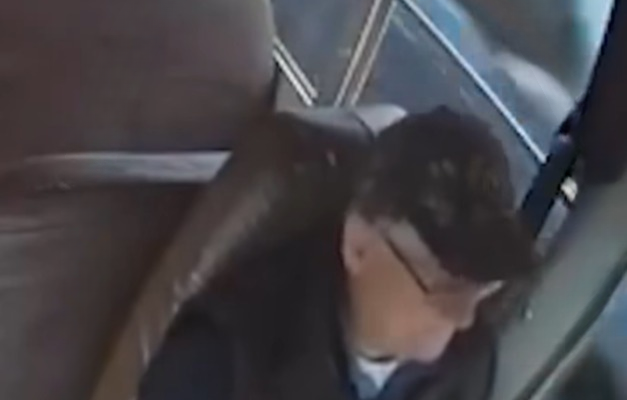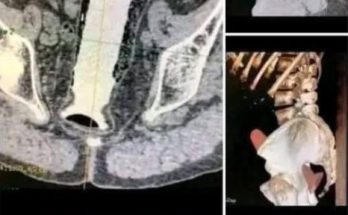Every morning across the United States, thousands of school buses begin their daily journeys—bright yellow symbols of reliability and safety. They carry students to classrooms, sports games, and after-school activities, often with trusted drivers who know every turn of their routes by heart. These men and women play an unseen yet vital role in ensuring children arrive safely, no matter the weather or traffic conditions.
For the students of North Creek High School in Bellevue, Washington, one such morning began like any other. The girls’ basketball team gathered at dawn for a scheduled game, their duffel bags slung over their shoulders, spirits high with pre-game excitement. The bus driver that day, Stewart O’Leary, was a familiar face—calm, courteous, and seasoned behind the wheel.
No one aboard could have predicted that what began as an ordinary trip would soon become a scene of courage, quick decision-making, and selflessness.
The first stretch of the journey unfolded smoothly. Players chatted, music played softly through earbuds, and coaches reviewed strategies for the upcoming game. O’Leary kept his steady focus on the road, navigating traffic with the practiced rhythm of experience.
The weather was clear that morning—crisp air, bright skies, and steady visibility. Nothing in the environment hinted at danger. Yet, as every experienced driver knows, emergencies rarely come with warnings.
As the bus moved along a section of highway near Bellevue, an object—believed later to be a metal fragment or detached vehicle component—hurtled through the air. In an instant, it smashed through the front windshield of the bus with violent force. Glass splintered outward, scattering across the dashboard and floor. The impact struck O’Leary squarely in the chest, knocking the wind out of him and leaving him momentarily stunned.
Inside the bus, confusion turned to alarm. The sudden noise was deafening—a burst of chaos that shattered the routine calm of the trip. Students gasped, bracing themselves instinctively as the vehicle jolted forward.
But even amid pain and shock, O’Leary’s instincts as a professional driver took over.
Instead of panicking, O’Leary gripped the steering wheel with whatever strength he had left. His training, discipline, and composure came together in that crucial moment. Fighting the searing pain in his chest, he guided the bus safely toward the shoulder of the road.
Witnesses later described his actions as “steady, deliberate, and heroic.” There were no abrupt swerves or signs of loss of control. O’Leary maneuvered the vehicle as gently as possible, ensuring that none of the passengers—young athletes full of trust in their driver—were harmed.
When the bus finally rolled to a stop, it did so safely out of the lane of traffic, avoiding further danger.
Immediate Response and Student Safety
As the dust settled, the coach onboard rushed to check on O’Leary while the students, shaken but unhurt, followed safety procedures. Emergency services were immediately contacted, and first responders arrived within minutes of the call.
According to Bellevue Police, the situation could have easily turned tragic if not for O’Leary’s composure. His ability to remain alert, despite his injury, likely prevented a catastrophic crash.
Paramedics treated O’Leary at the scene before transporting him to a nearby hospital for further evaluation. Authorities confirmed that his injuries, though serious, were not life-threatening. His first concern, even while being treated, was for the students’ well-being—a testament to his sense of duty.
A Team’s Shock Turns to Gratitude
In the hours that followed, news of the incident spread through the school community. Parents rushed to check on their children, teachers offered comfort, and the students themselves processed what had just occurred.
For the basketball team members, the experience was both frightening and humbling. Several students described feeling an overwhelming sense of gratitude. One player later shared, “He could have lost control, but he didn’t. He kept us safe. We’ll never forget that.”
School officials echoed the same sentiment, calling O’Leary’s response a model of professionalism and courage.
The Investigation: How Could This Happen?
Following the incident, local law enforcement and transportation authorities launched an investigation to determine how such a dangerous object could have struck the bus in motion. Early reports suggested that it may have been a metal suspension part or debris dislodged from another vehicle, possibly a truck traveling ahead on the highway.
Authorities combed through dash camera footage and roadside surveillance to locate potential sources of the debris. Vehicle part failures on busy highways are rare, but when they do occur, the consequences can be unpredictable.
Officials also praised O’Leary’s quick actions, noting that such situations leave drivers with only seconds to react—a brief window that often determines the outcome between life and tragedy.
A Broader Discussion on Road Safety
The event has sparked renewed attention on road debris and its impact on public safety. According to the Washington State Department of Transportation (WSDOT), debris-related incidents cause hundreds of crashes each year across the state. Many of these result from unsecured vehicle loads or mechanical failures that send objects flying into traffic.
Experts emphasize that while technology and infrastructure improvements help reduce risks, human vigilance remains the strongest defense. Simple actions—like securing truck cargo, maintaining vehicles properly, and reporting hazardous debris—can prevent incidents like this one.
Bellevue’s local community has also discussed reinforcing protective features on school buses, such as laminated safety glass and enhanced front panels, designed to withstand unexpected projectiles.
The Unsung Role of School Bus Drivers
For many, this story serves as a reminder of how vital school bus drivers are to community safety. They are often the first and last school representatives children see each day, carrying a deep responsibility not just for transportation but for care, discipline, and emergency management.
Bus drivers undergo rigorous training, including defensive driving, first aid, and crisis response. Yet their efforts often go unnoticed—until moments like this reveal the true scope of their commitment.
Stewart O’Leary’s actions highlight that behind every school bus route is a professional dedicated to more than just driving; they are guardians of the students they transport.
Community Reactions: Compassion and Support
Within hours of the incident, parents and residents of Bellevue began sending messages of gratitude. The school district released a public statement commending O’Leary for his “exceptional professionalism under pressure.”
Local businesses organized small fundraisers to support his recovery, and social media platforms were filled with messages of appreciation. One post read: “He turned a potential tragedy into a story of hope. Thank you for keeping our children safe.”
North Creek High School also held a brief assembly the following week to recognize O’Leary’s actions and to emphasize safety awareness among students and staff.
A Hero’s Recovery
At the hospital, O’Leary received treatment for chest and shoulder injuries caused by the impact. Doctors reported that his recovery would take several weeks, but his prognosis was positive.
When school officials visited him, they noted his humble response to the praise he was receiving. “I just did what I had to do,” he reportedly said. “Those kids trusted me. That’s my job—to bring them home safe.”
His statement resonated deeply with both parents and colleagues, illustrating how deeply he values his role.
The bus company later announced that he would be given full medical leave with pay during his recovery and that his job would be waiting for him upon return.
Lessons Learned from the Incident
While this event had a fortunate ending, it also served as a powerful learning moment for schools, transportation authorities, and drivers alike. Several lessons emerged:
-
Regular Vehicle Maintenance Is Crucial – The suspected cause—a detached metal part—underscores the importance of frequent vehicle inspections for both private and commercial drivers.
-
School Bus Safety Training Works – O’Leary’s calm handling of the situation proves that training programs for crisis response are effective and essential.
-
Emergency Protocols Save Lives – The coach’s swift communication with emergency services and the students’ orderly behavior contributed to a smooth resolution.
-
Community Awareness Matters – Citizens who report dangerous debris or road hazards play a direct role in preventing accidents.
By sharing these insights, local authorities hope to prevent similar incidents in the future.
Students Reflect on the Experience
Weeks later, when the team returned to the road for their next away game, there was a visible sense of reflection and unity among the players. Many admitted they felt nervous at first but quickly found comfort in their shared experience and the safety measures now reinforced by the school district.
Some players created handmade thank-you cards for O’Leary, decorated with messages like “You’re our hero” and “Thank you for keeping us safe.”
The school bus was inspected and repaired before being returned to service, fitted with new glass and reinforced safety features.
A Broader Symbol of Everyday Heroism
What makes O’Leary’s actions so inspiring is not just the danger he faced but the mindset behind them. He represents countless individuals in public service—drivers, teachers, custodians, crossing guards—who make decisions every day that keep others safe without fanfare or recognition.
His bravery shines a light on the quiet heroism embedded in everyday roles.
Bellevue’s mayor later remarked, “In a moment where fear could have taken over, he chose courage. That’s what true leadership looks like.”
Public Agencies Take Action
Following the investigation, the Washington State Patrol announced plans to review highway debris management procedures. Officials discussed increasing patrols in high-traffic zones and encouraging motorists to secure vehicle loads more rigorously.
The Department of Education also expressed interest in collaborating with school transportation departments to explore the feasibility of additional safety technologies—such as laminated windshields, forward-facing cameras, and driver-assist alert systems—to further safeguard bus operators.
Safety experts emphasized that while incidents like these are rare, proactive measures remain the best defense.
National Recognition
The story soon reached beyond Bellevue, gaining coverage from regional news outlets and online publications nationwide. Readers praised O’Leary’s quick thinking and commitment to his passengers’ safety. Some even compared his composure to that of airline pilots who have calmly handled in-flight emergencies.
The National Association for Pupil Transportation (NAPT) issued an official statement acknowledging his bravery and noting that his example would be included in future training seminars as a case study in emergency management.
Resilience and Return
After several weeks of rest and rehabilitation, O’Leary gradually returned to work. His first day back was met with applause from colleagues and students alike. A modest ceremony was held in his honor at the school district’s transportation center, where he was awarded a Certificate of Commendation for Bravery and Service.
The event was filled with warmth, laughter, and gratitude. In his short remarks, O’Leary simply said, “We all have a job to do. I’m just thankful everyone went home safe that day.”
The Bigger Picture: Strength in Community
The Bellevue community’s response revealed something powerful about collective resilience. When adversity struck, everyone—students, parents, teachers, police, and healthcare professionals—came together to support one another. It was a reflection of how communities thrive through compassion and shared responsibility.
For parents, it reaffirmed their trust in the safety of school transportation. For students, it became a story of courage that they will carry through their lives. And for the broader public, it reminded everyone that true heroism often lies in doing one’s duty with integrity and care, even when no one expects it.
A Legacy of Courage
Today, the North Creek High School team continues its season with renewed gratitude. Each trip they take serves as a quiet tribute to the man who protected them when danger struck unexpectedly.
As for Stewart O’Leary, he remains humble about what happened. To him, it was simply a matter of responsibility—one that he believes any dedicated professional would have fulfilled. Yet, to those whose lives he safeguarded, his actions will forever stand as a symbol of selflessness and humanity.
Conclusion: Ordinary People, Extraordinary Moments
In a world often filled with stories of uncertainty and risk, this incident offers something different—a reminder of courage under pressure and the power of presence in critical moments. Stewart O’Leary’s quick thinking didn’t just prevent disaster; it reaffirmed faith in the everyday heroes who keep our children safe, one bus ride at a time.
When we look back on this event, it is not the crash that defines it, but the calm hand that guided everyone to safety. That is the essence of true heroism—not fame or recognition, but doing the right thing when it matters most.



